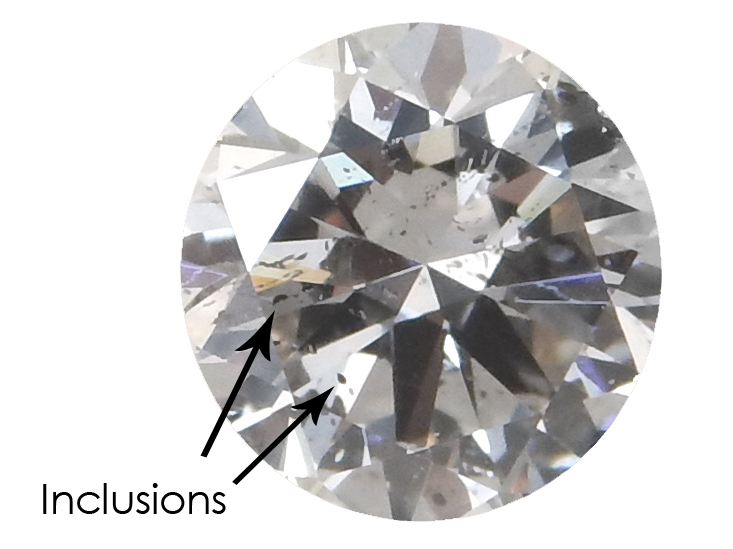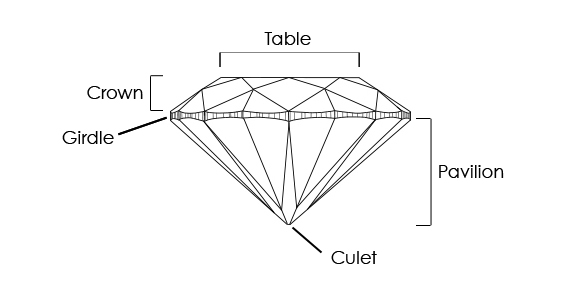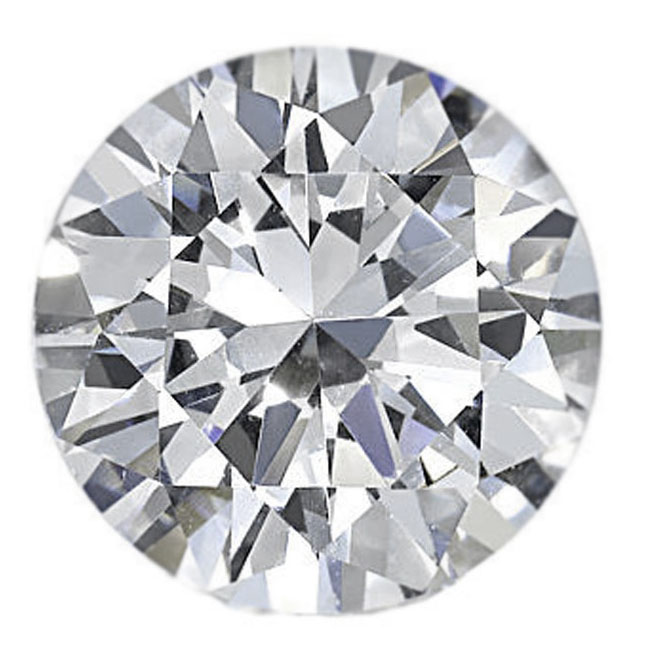When looking to purchase a diamond, you’ll likely notice several key terms being used to describe the precious gemstone. While you’ve most likely heard some of these words before, you probably have no idea what they mean or how they could possibly relate to a diamond. Here are the main terms you need to know when researching and looking to purchase a diamond.
Inclusion: A small crystal that becomes trapped inside a diamond during its formation stage. Inclusions are like a fingerprint in that they can be used to identify a particular diamond. Too many visible inclusions can diminish a diamond’s overall value.

Blemish: Similar to an inclusion, but occurs on the surface of a diamond instead of the inside. Whereas inclusions are typically created when a diamond is forming, blemishes usually form after a rough diamond is extracted from the ground and then cut. Examples of blemishes include scratches, nicks, abrasions, and burn marks.
Clarity: The evaluation of a diamond’s inclusions and blemishes. A diamond’s clarity can range anywhere from flawless (FL) to severely included (I3). Highly included diamonds can not only affect a diamond’s overall appearance, but they can also affect the integrity of the diamond.

Eye-Clean: A diamond with no visible inclusions or imperfections when viewed from the naked eye.
Color: When referring to colorless diamonds, color actually refers to the absence of hue on a diamond. Graded from D (colorless) to Z (light yellow/brown), a diamond’s color is one of the four factors that determine a diamond’s value (the others being clarity, carat weight, and cut).

Carat: A measurement used to describe the weight of a diamond. One carat is equal to 1/5 of a gram. You may also hear the word “points” or “pointer” being tossed around when discussing the weight of a diamond. One carat is divided into 100 points so that a diamond of 25 points is described as a quarter of a carat or 0.25 carats.

Facet: A diamond’s flat, polished surfaces. Round brilliant cut diamonds have 57-58 facets in order to maximize sparkle.
Cut: How well a diamond’s facets interact with light. Generally, this is the most important value factor of a diamond. A diamond’s cut can range anywhere from excellent to poor, with excellent cut diamonds commanding the highest price.
Symmetry: The exactness of a diamond’s shape, overall outline, and placement and alignment of individual facets. A diamond with excellent symmetry will direct light the best and display maximum brilliance.
Florescence: The effect that ultraviolet light has on diamonds. Diamonds that have a high florescence will typically glow blue when exposed to ultraviolet light and may appear hazy. The one benefit of diamond florescence is that it can make a lower color grade diamond appear whiter than it actually is.
Crown: The top portion of a diamond.
Pavilion: The bottom portion of a diamond.
Girdle: The narrow band that encircles the width of a diamond and separates the crown and the pavilion. If a diamond is inscribed with either the GIA certificate number or a special message, it will typically be engraved on the girdle. An appropriately sized girdle is important. If the girdle is too thin, it can affect a diamond’s durability. If it’s too thick, it can hide unnecessary weight, causing you to pay more for a higher carat diamond even though it may appear smaller than other diamonds with a comparable weight.
Culet: The bottom-most facet of a diamond. Ideally, they would be no culet since it would mean that all facets meet up at a single point. However, a diamond’s culet does have an important purpose in preventing any potential damage to the diamond’s pointed bottom, so a culet that is small is still preferable and will obtain an excellent cut grade. Larger culets have a negative effect on a diamond’s face up appearance and will therefore lower its cut grade.
Table: The top, flat surface of a diamond. A diamond’s table is its largest facet and affects how a diamond will sparkle.
 Table Percentage: The average table size divided by the average girdle diameter, multiplied by 100. This calculation is important because it shows how well a diamond has been cut in relation to its proportion.
Table Percentage: The average table size divided by the average girdle diameter, multiplied by 100. This calculation is important because it shows how well a diamond has been cut in relation to its proportion.
Depth: A diamond’s height (measured in millimeters) from its table to culet.
Depth Percentage: A diamond’s depth divided by its average girdle diameter, multiplied by 100. Similar to a diamond’s table percentage, the depth percentage dictates how much light is reflected back to the diamond observer. A diamond’s ideal depth percentage will vary depending on its shape.







 Table Percentage: The average table size divided by the average girdle diameter, multiplied by 100. This calculation is important because it shows how well a diamond has been cut in relation to its proportion.
Table Percentage: The average table size divided by the average girdle diameter, multiplied by 100. This calculation is important because it shows how well a diamond has been cut in relation to its proportion.